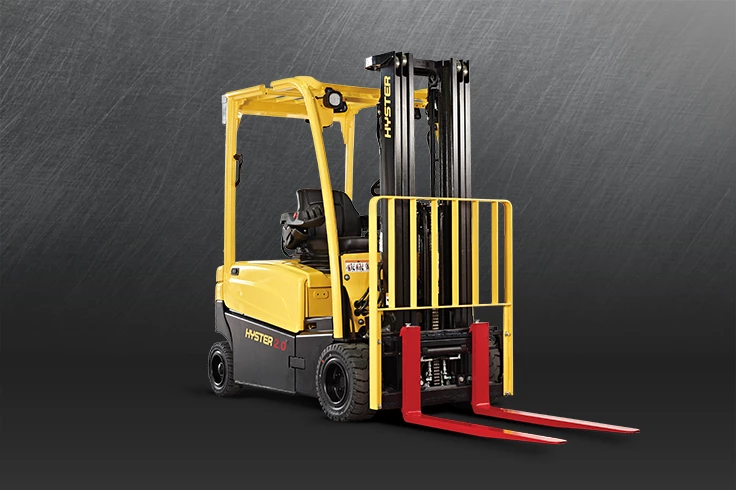As with any machine, forklifts need regular maintenance to perform their best. Catching signs of wear and tear early, rather than letting them worsen, can save you from costly repairs in the future.
Tires must be replaced when they have bald spots or show signs of flattening. Also, if you notice tearing or the rubber separating from the metal band that supports them, it’s time to switch out the tires.
Forks
The forks and mast of a forklift take the brunt of most lift truck accidents, so they endure a lot of daily strain. Keeping up with recommended maintenance and addressing signs of wear, like forks that are uneven or rusting, can help extend the life of this piece of equipment.
Forks bent or cracked are a sign of more structural problems and may even prevent the forklift from operating properly. Attempting to reshape the forks is dangerous and against OSHA guidelines.
Brake issues that cause grinding or loud squeaking noises while in use and tires that are flat or missing chunks of rubber are indicators that the forklift tires need to be replaced. Keeping up with regular brake inspections and following the forklift maintenance schedule can minimize premature tire replacement.
Brakes
The brakes on a forklift ensure it doesn’t roll away when parked on uneven or sloped ground, preventing accidents. They consist of a brake drum and brake shoes that work together to slow the forklift using friction. Over time, the brakes will wear down and need to be replaced. Regularly perform a visual inspection of the brakes to ensure they aren’t worn down or showing signs of wear and tear.
The tires on a forklift provide a cushion between the forklift and the ground, ensuring a smooth ride for operators. However, repeated use and exposure to rough terrains can cause them to wear down or damage quickly. Check the tires regularly for signs of wear and tear, including tearing or chunking. Replace any damaged or worn tires immediately to prevent accidents and other problems.
Tires
Your forklift is heavily dependent on its tires. They are the only thing between them and their environment, so you must ensure they are sturdy and in good condition.
Forklift tires absorb the shock of driving on rough or changing surfaces, so having them worn down will not only be uncomfortable for operators but can also lead to errors and cost you more fuel money. Regular inspections and cleaning of forklift tires can extend their service life.
Some forklift tire types, such as pneumatic tires, have a line built to indicate when they are ready to be replaced. You can also look for signs of excessive wear, such as a sagging sidewall or uneven tread. Other forklift types, like polyurethane tires, offer increased traction and have a longer lifecycle than rubber tires.
Battery
The battery is the heart of your forklift, whether you have an internal combustion (IC) or electric model. When a battery malfunctions, it is a serious safety risk for your team and can prevent the lift from starting or functioning.
Forklift tires can wear out quickly in environments with lots of debris, like recycling centers or lumber yards. Choosing the right tire type is important and ensures you don’t overspend on replacements.
You must also keep track of your forklift’s hours. Running it for longer than recommended can shorten the lifespan of the equipment. This can be costly as it means you will need to purchase more forklift parts like Intella Parts or replace the whole machine earlier than you should. It can also be dangerous for your staff and cause expensive damage to the inventory.
Oil Filter
Like other equipment, forklifts require regular maintenance to keep operations moving efficiently. Failure to do so can cost companies time, money and productivity by keeping workers waiting on materials while the forklifts sit idle.
Brakes are constantly working to slow and stop forklifts while carrying heavy loads – it’s no wonder they wear down over time. When they become sluggish and stop functioning correctly, it’s time to replace them. Forks should be inspected regularly to ensure straight, damage-free, and not showing signs of bending or wear. If the forks show signs of metal contact, such as visible scrape marks or grinding sounds during operation, this is a sign that they need replacement. A bent fork hook indicates it’s time to purchase a new one.




